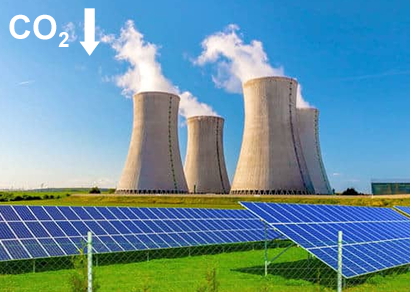
Carbon is a part of the atmosphere, rocks, and seawater. On Earth, carbon is able to move from one of these realms to another as a part of the carbon cycle. The steps of the carbon cycle are given below:




They occur in a short period of time – sometimes days, months, or years for the carbon to get reserved. The excess of carbon from the short-term cycle is stored for a long time before getting released.
They take thousands of years to occur. The excess of carbon from the short-term cycle is stored for a long time before getting released.
The change in the carbon cycle can have a huge impact on our planet Earth. Excess carbon production warms the planet and helps the plants to grow more. They also cause water more acidity in oceans which makes marine life in danger. The excess of carbon dioxide doesn’t increase global warming right away. They soak up the ocean when the temperature of Earth increases at least another 0.6 degrees Celsius. They also can cause damage to marine organisms. The shells of crustaceans become thinner and more fragile.


Today, the term “carbon footprint” is often used as shorthand for the amount of carbon (usually in tonnes) being emitted by an activity or organization. The carbon footprint is also an important component of the Ecological Footprint, since it is one competing demand for biologically productive space. Carbon emissions from burning fossil fuel accumulate in the atmosphere if there is not enough biocapacity dedicated to absorb these emissions. Therefore, when the carbon footprint is reported within the context of the total Ecological Footprint, the tonnes of carbon dioxide emissions are expressed as the amount of productive land area required to sequester those carbon dioxide emissions. This tells us how much biocapacity is necessary to neutralize the emissions from burning fossil fuels.
Climate change can be overwhelming. The science is complex, and when it comes to future impacts, there are still a lot of unknowns. While real solutions will require action on a global scale, there are choices you can make in your day-to-day life to lessen your personal impact on the environment. This guide will walk you through some of them.
A carbon footprint is the total amount of greenhouse gas emissions that come from the production, use and end-of-life of a product or service. It includes carbon dioxide — the gas most commonly emitted by humans — and others, including methane, nitrous oxide, and fluorinated gases, which trap heat in the atmosphere, causing global warming. Usually, the bulk of an individual’s carbon footprint will come from transportation, housing and food.
A carbon footprint is the total amount of greenhouse gas emissions that come from the production, use and end-of-life of a product or service. It includes carbon dioxide — the gas most commonly emitted by humans — and others, including methane, nitrous oxide, and fluorinated gases, which trap heat in the atmosphere, causing global warming. Usually, the bulk of an individual’s carbon footprint will come from transportation, housing and food.
Power your home with renewable energy.
Invest in energy-efficient appliances.
Reduce water waste.
Actually eat the food you buy—and make less of it meat.



Enter your email address to get register to our newsletter